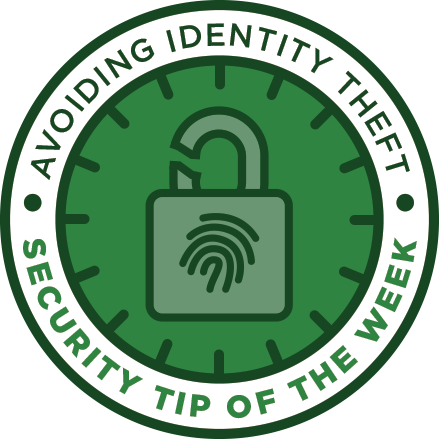
Whether you’re checking your bank accounts, transferring funds, or making a payment, online banking is a convenient way to manage your basic transactions. However, online banking is not without its risks, so you’ll need to be cautious when storing usernames and passwords on your computer and make sure to follow these seven tips for safe online banking:
1. Monitor your accounts regularly. Check your accounts regularly to make sure all transactions posted are ones YOU authorized. Report any fraudulent or suspicious activity to us. Get into the habit of monitoring your accounts every few days and always after you’ve done any type of online shopping. You will want to make sure your account was charged appropriately and that your account number isn’t being used for other purchases you didn’t make.
2. Avoid clicking through emails. We may send you email alerts and updates, but you don’t have to click through the links to access your account. It’s usually much safer to log in to the website manually to ensure you are entering a secure site. Phishing emails redirect the recipient to a malicious website or fraudulent version of the bank’s website and some are designed to collect your username, password, and other personal information. Don’t be afraid to call us to verify whether we sent you an email. Never respond to emails that ask to verify your identity by providing your username or password. We WILL NEVER ask for this information via email—at most, you will need to supply the answer to a security question and will do this over the phone with a personal banker.
3. Change your passwords regularly. Avoid using the same password across multiple sites and make sure you are choosing a strong password that is a mix of upper and lower case letters, numbers, and special characters. Avoid using any words or phrases that contain your name, initials, or your birthdate. Also get into the habit of changing them every couple of months. If asked to verify your identity by answering a security question, know this extra layer of security can make the online banking process that much safer.
4. Access your accounts from a secure location. Avoid using unsecured wireless access points to jump online and log in to your online accounts. You should access these accounts when you’re certain you have a secure connection. Unsecured wireless access points, such as those found at airports, coffee shops, and hotels, are easy to intercept and someone could easily collect the information you’re using to log in.
5. Protect your computer. Make sure you’re running anti-virus protection software and the firewall is turned on so you aren’t vulnerable to any type of virus that might be downloaded and installed from a malicious site. Take the time to review different programs and pay a little extra for a higher-quality one that will provide you with protection when you are banking online, shopping online, or just opening emails.
6. Check for encryption. You’ll want to check if you’re really logging in to your bank’s site by looking for a small lock icon somewhere on your browser. The URL should also begin with “https.” Both the icon and the URL indicate you are accessing your account over an encrypted connection.
7. Keep your system up-to-date. Whether you’re using a laptop or desktop computer to access the Internet, make sure you’re downloading appropriate updates and keeping your system up-to-date. Run anti-virus scans regularly and authorize system updates as needed. Some of the leading Trojan horse viruses only work on outdated systems, so your computer may be more vulnerable to an attack unless you continually update it. You can also run scans on a schedule to double-check for bugs.
